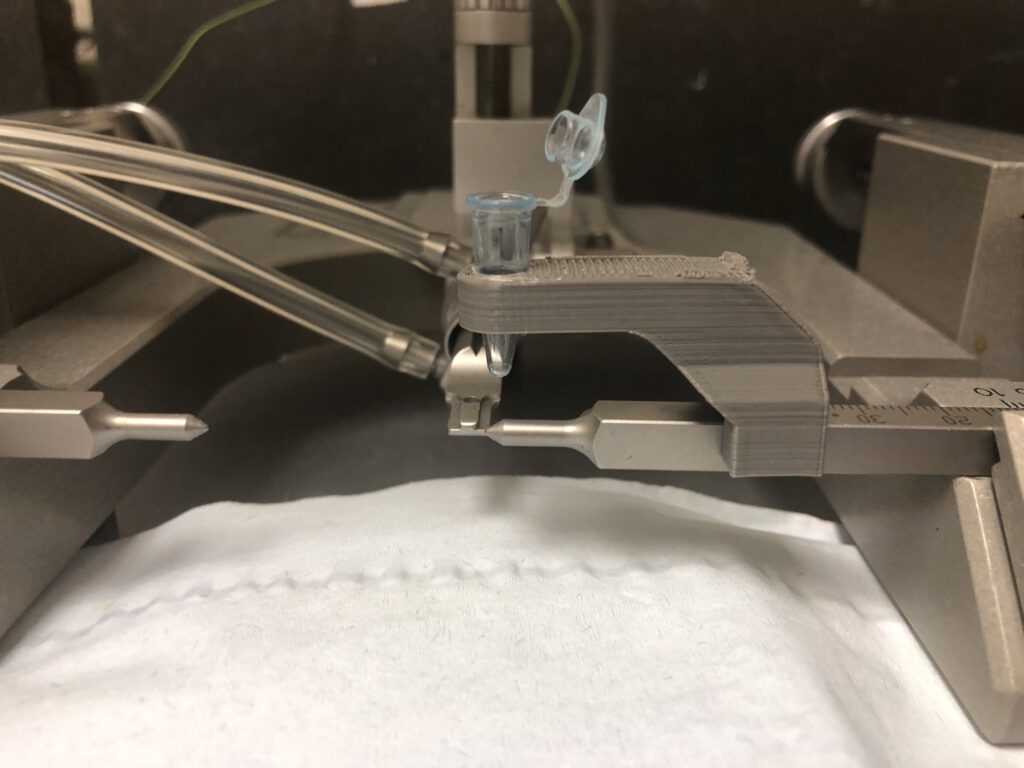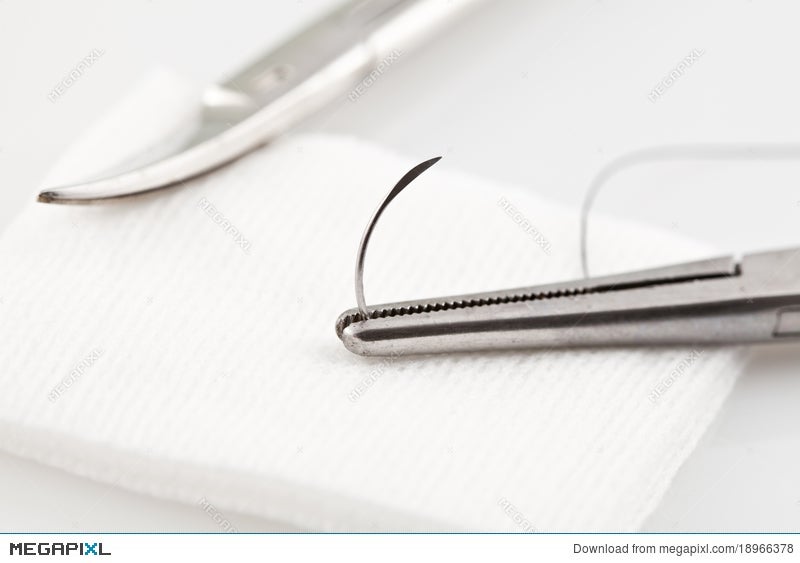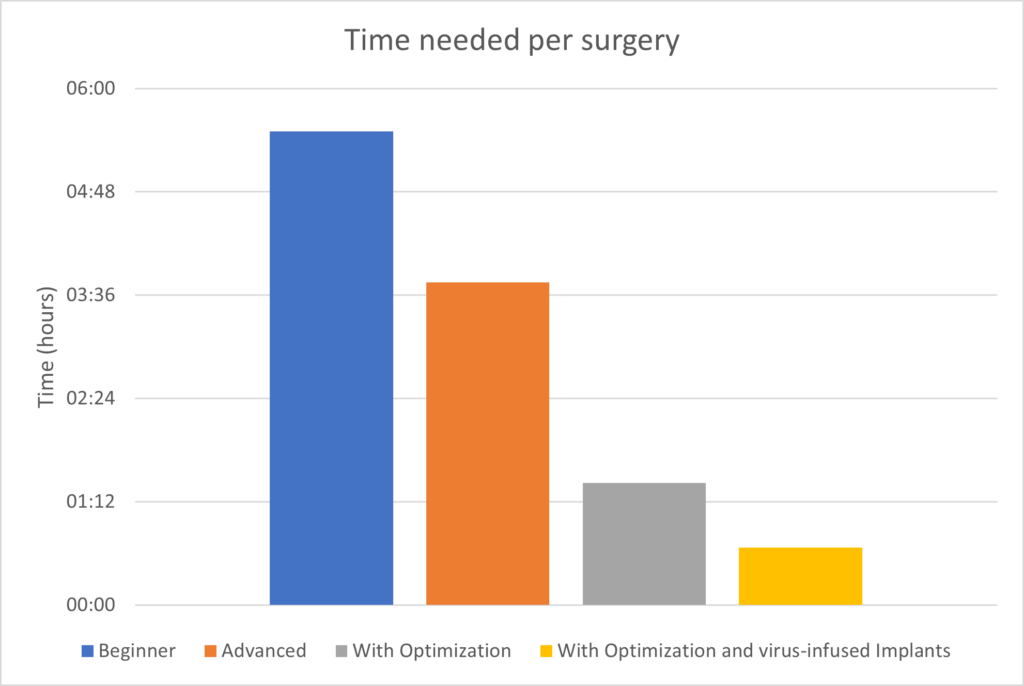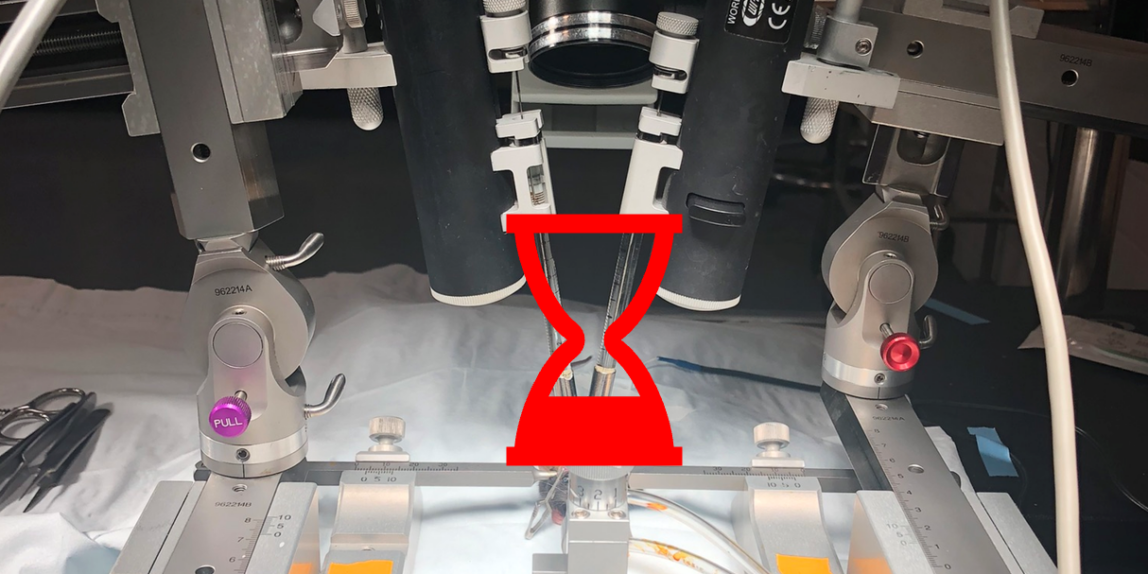[only for stereotactic rodent surgeries]
Do you wonder how your fellow researchers publish an insane amount of experiments in Nature Neuroscience and Neuron every year while you are struggeling to get surgeries done for a single experiment? Maybe they are just more efficient and faster. Especially surgery is a field where you can save multiple weeks! In this blog post, I want to provide a list of small optimizations that help you getting faster. I won’t go over the principles of stereotactic surgery here. This means, only read this article if you already know how to do surgery.
But before we start, it’s important to note that the biggest time saving is to increase the quality of your surgery. If less than 95 % of your surgeries yield usable data, don’t try to do surgery faster – first, learn to increase precision and quality in your surgery.. This is important because you will spend a huge amount of time to habituate, train and test the animals and you only know whether an animal yields good data after the experiment is completed..
First rule: No compromises with animal welfare
Do not make any optimizations that could potentially affect animals welfare. Besides ethical reasons, suffering animals will also affect the outcome of your experiment and can cause major drawbacks. Don’t make any compromises that could affect the quality and precision of the surgery. Often, this would lead to virus not expressing well or implanting at the wrong location. These problems are important to prevent because if they occur, you will need multiple months (until data analysis or Immunohistochemistry) to recognize them and by that time, a huge time investment will be lost.
One syringe, many surgeries.
It can take up to an hour to prepare the virus, clean and load the syringe and to control for clogging. You can save time if you do multiple surgeries in a single day using the same syringe. Let’s say, you plan 5 surgeries in a day. Then you would prepare your syringe once in the morning and use the same load for every subsequent surgery. This alone will save you 4 hours. There are, however, a few things to take care of:
- Sterilise the syringe and the needle tip before every subsequent surgery
- Do a dripping test before every injection, not just once. Also, check that the plunger in the syringe moves during the injection. Then, you can be sure that the desired amount of virus is actually getting ejected.
- If virus is left and you want to continue the next morning, put the loaded syringe in the fridge to prevent a drop in titer.
Operating the syringe is one of the most important steps because a small error can lead to failed viral expression. With an established virus, you should be able to get expression after more than 95 % of your surgeries. If you are not there yet, try the following things:
- Use a tube holder to load the virus and watch through the microscope when loading. Make sure the tip of the needle is always in the virus but doesn’t stick to the ground of the tube. This ensures that virus is flowing into the syringe and that no air / vacuum bubbles develop.
- Test clogging before every injection. You can do this by ejecting a small amount of virus straight before you lower the needle into the brain. If no virus ejects, your needle is clogged.
- Make sure that virus actually ejects into the brain. Easiest method to validate this is to check whether the plunger in the syringe is lower after the injection than before (use the microscope to check)
- Keep the syringe clean and free from contamination.
- Only do surgery if you know that the titer you use will produce good results. If not, do a small titer-optimization experiment first. It’s not worth it to perform surgery on a full batch of experimental animals only to find out later that 70 % are unusable.

Anesthesize the next animal early
This is an optimization that surgeons in human medicine do as well. Depending on the anesthesia you use, it might take 5 – 10 minutes until the rodent is properly anesthesized. You can save this time if you anesthesize the next mouse before you suture the current one.
Don’t mount the drill
Instead, drill the craniotomy free-handed. How? Mark the position of the craniotomy with a surgical marker (for example, use the same marker that you used to level the skull), find good support for your hands and arms to reduce small tremor in your hands and carefully drill the hole. This will save you time needed to mount the drill onto the stereotactic arm, to move, calibrate, calculate coordinates, move again, and drill.
Sounds dangerous? It isn’t! I made the experience that because of the haptic feedback, you get a better feeling about the tissue which reduces probability of an accidental durectomy or brain damage. In addition, this will be a good practice for other types of surgery. For example, if you want to implant a grinlense or a multi-fiber array, you need to drill the craniotomy free-handed anyways.
Don’t calculate stereotactic coordinates

Usually, there are these 5 minutes during the surgery where you sit down and calculate the target coordinates for the virus or the implant. This is not only unnecessary, but also very error prone. It happened to me that I made a silly mistake and almost injected 1 mm too anterior. And 1 mm is a big deal. Instead, I now don’t calculate coordinates at all – to reach the target coordinates, I just turn the wheel by the desired distance directly. This method is less error-prone because math mistakes happen, but you have to be scatterbrained to turn the wheel for 2 rotations instead of 1.
Use the time during viral injection
Slowly injecting the virus and letting it rest takes about 15 minutes. 15 minutes that you can use to prepare your next steps. For example, you can unpack, inspect, sterilise, and mount the implant during this time. After the injection is complete, you can then start with the implantation directly. If you are advanced, you could also use the time window to manufacture the implant completely.
Use a single portion of dental cement
After you lowered the implant, you need to permanently attach the implant to the skull using a dental cement. If you use Metabond, make sure you use only a single portion of Metabond instead of 2 or even 3. This saves up to 20 minutes and money as dental cement is expensive. One portion is more than enough to securely fix the implant. If you have difficulties, consider two hints: First, make sure that you don’t drop cement onto the skin or implant. This would be a waste, creates skin irritations and you need time to remove the debris (by then, the rest of the cement is hard and unusable). Second, learn the haptics of the cement. Learn how it behaves at what temperature and make use of this knowledge to create a perfectly flat hill. While the cement is drying, you can anesthesize the next animal.
Train your hands

Mice are small, virus and implants are even smaller. You can get significantly faster in certain steps if you take some time for practice. There are a few steps where a bit of training really helps:
- Ear bars: This takes usually less than 10 seconds for a trained researcher, but up to 20 minutes for a beginner. You can use a practice mouse to fully understand the skull anatomy and how to find the correct position easily.
- Suturing: Here, we can look at surgeons in human medicine again. Students in medschool often practice this skill in the train or even in lecture. There are cheap ($ 20) suture-practice kits available on Amazon which you can use to train. Also, you can try using a suturing technique that creates a continuous suture along the incision instead of putting multiple small sutures.
- Cementing the implant. Learn to not drop any cement onto the skin and understand the haptic of the cement to create the hill faster.
One stereotactic arm per instrument
During a surgery, we use multiple stereotactic instruments like the syringe, the drill, the surgical marker, and the implant holder. Whereas mounting a new instrument can be fast, the position of the newly mounted instrument might be off by several inches and you spend several minutes rotating the wheel to move the instrument to the correct position.
Instead, if available, allocate one stereotactic arm for one instrument. For every subsequent surgery, your instrument will be very close to the target position.
Pro Tipps for double implants
Sometimes, you might want to implant two fiber-optic canulaes in one animal, for example to record both hemispheres, or to optogenetically stimulate a specific brain region but measure brain activity in another. The important thing here is, that you do both locations at the same time. This means, you need two syringes and two implant holders. Use both of your hands to move both stereotactic arms at the same time (yes, this requires some good coordination), inject simultaneously and implant simultaneously.
Skip the viral injection entirely
Wait what? Yes, this is possible. Check out this paper. It is possible to coat the tip of the fiber with the virus and implant the virus-infused implant directly. How does it work? You create a solution of your virus and silk fibroin. Silk fibroin is a protein that can hold the virus for an extended period of time and that also glues to the fiber. When implanted, it releases the virus over time into the brain tissue.
This technology is promising because it makes surgery faster, more precise (because viral expression is always at the tip), and easier for new researchers to learn. You can take an hour in the evening to prepare a bunch of these implants and implant them all during the next day.
The important thing here is to take care when manufacturing these implants: It is important that the virus aggregates at the tip of the fiber and not at the side. It is also important to keep a good seal when you vaccuum-decissitate the implant over night. Otherwise the titer drops as virus leaves the scaffold as an aerosol.
How big are the savings?

Using these optimizations, it is possible to cut down surgery time by more than 50 %. Personally, I need about 1:25 h for a single surgery – which allows at least 5 surgeries per day. If I skip the injection and use virus-infused implants, I only need around 40 minutes, which makes 10 surgeries per day possible.
